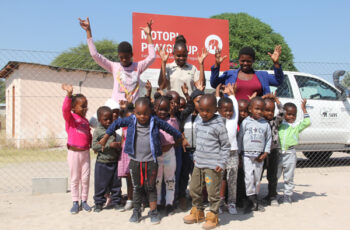
Protection status:
Endangered
Population Botswana
130.000
Threat of:
Poaching, trophy hunting, The
Fragmentation of their habitat,
Human-wildlife conflicts
The African elephant is the world’s largest living land mammal. The large pachyderms are unmistakable in the African landscape and their size alone means they have no natural enemies. However, in many African countries where they were once native, they have been wiped out over the years. In the last 100 years, a decline of more than 95 percent (from 10 million to currently about 350,000) has been recorded! Besides the hunting for their ivory, the lack of migration routes between wildlife areas is the elephants’ undoing.
Especially the lack of water points on the wildlife corridors in the national parks has become a problem. Elephants drink up to 150 liters of water per day and depend on finding sufficient drinking opportunities during their migration. However, as water points have dried up, they penetrate into local village communities in search of water. There, they destroy crops on agricultural land and endanger the people living there. Understandably, these people want to protect themselves and their fields, thus further endangering the already threatened elephants.

„We villagers have a lot of trouble with the elephants,
because they regularly trample the fields in search of water
trample the fields and get too close to the people in the
community too close.“
– Mr Johane Tlholego Ngwengare, Phuduhudu Village Chief-
Protection status:
Endangered
Population Botswana
130.000
Threat of:
Poaching, trophy hunting, The
Fragmentation of their habitat,
Human-wildlife conflicts
SAVE is working in northeastern Botswana to create, maintain, and rehabilitate wildlife corridors so that elephants can safely migrate to their feeding grounds, find sufficient water along their routes, and reduce conflict with people in nearby villages in the process. Constructive cooperation with all stakeholders in the communities is an important prerequisite for good solutions. The revival of a long-standing wildlife corridor between the Okavango Delta and the Makgadikgadi Pan proves that this can succeed.
To revitalize the long-standing wildlife corridor in northern Botswana between the Okavango Delta and Makgadikgadi Pan, SAVE Botswana Headquarters Maun partnered with the Department of Wildlife and National Parks. The plan is to equip and re-commission man-made water points that have been dormant for 10 years. The first water point has been used since summer 2020 to rehabilitate a 120-km wildlife corridor that allows wildlife to access the adjacent national park. Work included cleaning, re-casing, covering the wellhead, replacing 1,000 meters of pipeline between the well and the water point, registering the well, installing a new solar-powered wellhead high-capacity pump, and a solar-powered electric fence to protect equipment around the well.
Botswana
Km Elephant/ Wildlife Corridor revived
Elephants on their migration routes with Water supplied
Award received from DWNP
Mr. Kebadiretse Mosepele, DWNP staff in Maun, expressed effusive gratitude for the water hole rehabilitation: “It came just at the right time!” he said. “… It not only helps the animals, but can also generate revenue as a tourist attraction. Since the water started flowing again, not only elephants but also giraffes, lions and other wild animals drink there …”
These are good prospects: in order to repair the entire wildlife corridor, additional water points are now being will be equipped and kilometer after kilometer will be made usable again for the elephants and other wildlife. We appreciate your support!
Stay up to date – we will inform you regularly about our projects and further activities.